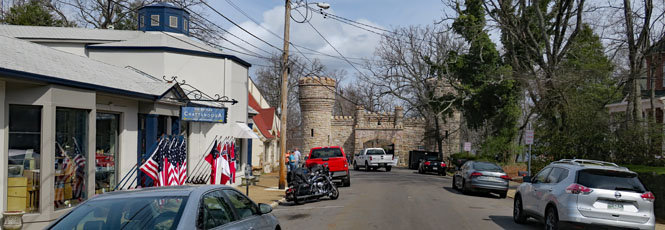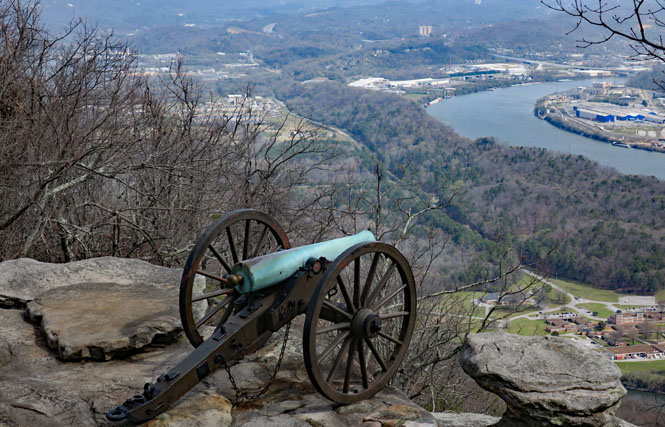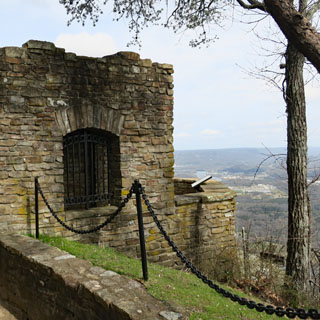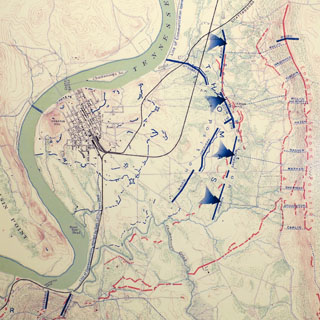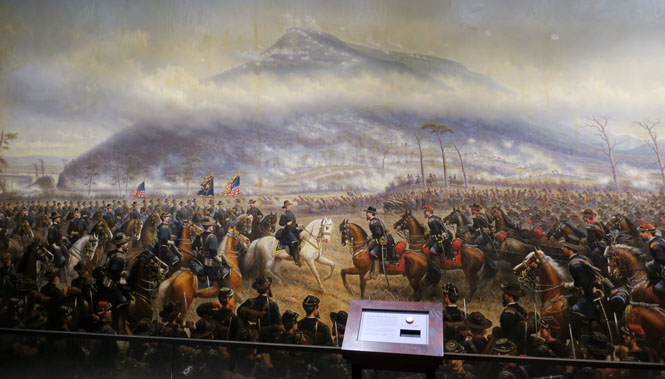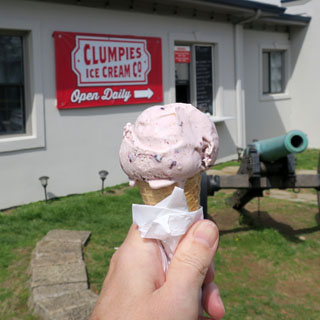March 26, 2017

The battles of Chickamauga and Chattanooga were separate events, but are so linked together (as one leading to the other) that they are often combined--as the National Park service has done.
 Chickamauga & Chattanooga
National Military Park.
Chickamauga & Chattanooga
National Military Park.
 Georgia
Georgia
The
Battle of Chickamauga. It was second only to Gettysburg for casualties
during the Civil War. It was a tremendous victory for the Confederacy,
but the follow-up advantage was not taken.The Visitor Center. This park is quite large and is one of the better preserved of all Civil War battlefields.
Things were pretty confused during the battle, so these exhibits really help to straighten things out in your mind.
Looking south from the visitor center.
There are a number of roads through the battlefield and hundreds of signs and plaques explaining what happened. Signs for Union positions and activity are in blue and Confederate signs are in red.
I think you could head out in any direction and come across these isolated monuments tucked away in the trees.
The Confederates of Braxton Bragg broke through the lines of William Rosecrans and the Union side, but the Union's General George Thomas didn't break and consolidated the remaining forces here--where he earned the name "The Rock of Chickamauga."
Thomas held his ground long enough for the Union Army of Tennessee to retreat to Chattanooga, where they hunkered down for a long siege. The Confederate Army of the Cumberland lost their opportunity to smash the Union incursion into Georgia.
The Confederates won the battle, in that they controlled the battlefield when it was all over, but the Union still occupied Chattanooga.
 Tennessee
Tennessee
Battle of Chattanooga (Lookout Mountain). Once the Union forces in Chattanooga were able to break the blockade and received supplies, it was inevitable that they'd attack, again. By this time Ulysses Grant was running everything while Braxton Bragg remained the leader of the Confederate forces.
The Battle for Lookout Mountain came just before the larger battle (Missionary Ridge) and wasn't really the main point of the operation. But, it happens that the major Park Service installation is here.
These canon would overlook the Union Army (that's the Tennessee River down there, with Chattanooga to the right). It's obvious why this location had to be taken.
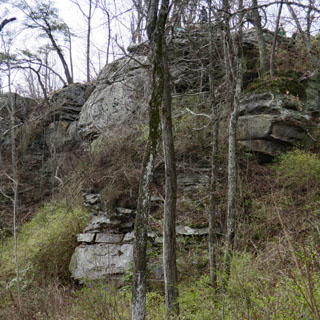
Missionary Ridge is across the valley (and just seen in the haze). The Confederates abandoned this position to help reinforce the lines on that ridge.
The small museum has a good number of period maps, which are enormously helpful.

Such over-sized panoramic paintings seem to have been quite popular after the war. This is the view of Lookout Mountain from within the Union divisions. "You mean we're supposed to charge to the top of that?"
Taking a break with a Clove and Boysenberry ice-cream cone from Clumpies (a well-protected place).
Chattanooga National Cemetery contains many of the fallen Union soldiers (and some Confederate). There is also a separate Confederate cemetery. As with Gettysburg, these small markers are used.
The Andrew's Raiders conducted a daring operation deep in the south that included stealing a locomotive--leading to the great locomotive chase that was a key part of Buster Keaton's "The General."
More recent markers at the National Cemetery.

